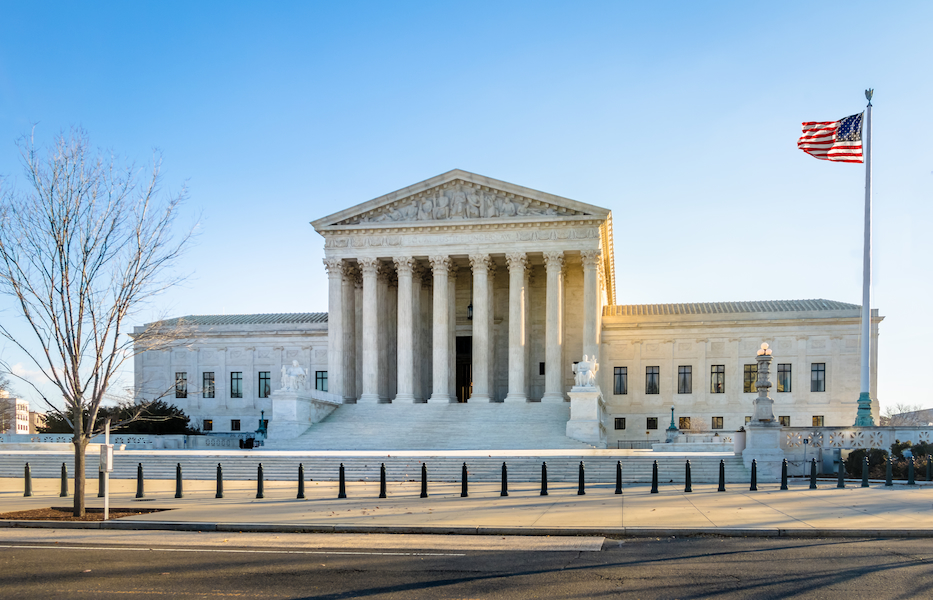Oral Arguments in Six Cases Include Hovercrafts and Lethal Injection

The U.S. Supreme Court heard oral arguments in six cases this week. The issues before the justices were extremely varied, ranging from whether hovercrafts should be allowed on Alaska conservation land to whether
Sturgeon v. Frost: This is the second time the Court has considered whether hovercrafts should be allowedin the Yukon-Charley Rivers National Preserve conservation system unit. The specific question before the Court this time is: “Whether the Alaska National Interest Lands Conservation Act prohibits the National Park Service from exercising regulatory control over State, Native Corporation, and private land physically located within the boundaries of the National Park System in Alaska.”
Virginia Uranium, Inc. v. Warren: The preemption case involves mining of uranium, specifically whether a 1983 Virginia law imposing a moratorium on uranium mining is preempted by the Atomic Energy Act (AEA). In PacificGas & Elec. Co. v. State Energy Res. Conservation & Dev. Comm’n, 461 U.S. 190, 212 (1983), the Supreme Court held that the AEA “occupie[s] the entire field of nuclear safety concerns.” In accordance with Supreme Court precedent, the TenthCircuit has held that “a state cannot use its authority” over activities indisputably subject to State regulation as a pretextual “means of regulating radiological hazards” arising from activities entrusted by the AEA to the Nuclear Regulatory Commission (NRC). In contrast, the Fourth Circuit held that so long as a challenged state law “does not [on its face]purport to regulate an activity within the [AEA]’s reach,” courts may not”conduct a pretext analysis” to “decipher whether the legislature was motivated” by radiological safety concerns.” The question before the Supreme Court is: “Does the AEA preempt a state law that on its face regulates an activity within its jurisdiction (here uranium mining),but has the purpose and effect of regulating the radiological safety hazards of activities entrusted to the NRC (here, the milling of uranium and the management of the resulting tailings)?”
Bucklew v. Precythe: The death penalty case
BNSF Railway Company v. Loos: The Railroad Retirement Tax Act of 1937 imposes taxes on “compensation” paid by railroads to their workers. The statutedefines“compensation” as “any form of money remuneration paid to an individual for services rendered as an employee to one or more employers.”The question the justices must decide is “[w]hether a railroad’s payment to an employee for time lost from work is subject to employment taxes under the Railroad Retirement Tax Act.”
Republic of Sudan v. Harrison: The closely-watched case involves how foreign defendants must be served in legal proceedings, an
Culbertson v. Berryhill:The case also involves a circuit split. This time the issue is the cap onattorneys’ fees for successful Social Security disability claimants. The Courthas agreed to determine “[w]hether fees subject to 42 U.S.C. § 406(b)’s25-percent cap related to the representation of individuals claiming SocialSecurity benefits include, as the U.S. Courts of Appeals for the 6th, 9th, and10th Circuits hold, only fees for representation in court or, as the U.S.Courts of Appeals for the 4th, 5th, and 11th Circuits hold, also fees forrepresentation before the agency.”
Previous Articles
SCOTUS Wraps Up Oral Arguments for the Term
by DONALD SCARINCI on May 17, 2022
The U.S. Supreme Court has concluded its oral arguments for the October 2021 Term. The justices hea...
SCOTUS Rules Censure of Elected Board Member Didn’t Violate First Amendment
by DONALD SCARINCI on May 10, 2022
In Houston Community College System v. Wilson, 595 U.S. ____ (2022), the U.S. Supreme Court held th...
Supreme Court Breach Is Not the First Involving Roe v. Wade
by DONALD SCARINCI on
The recent disclosure of Justice Samuel Alito’s decision purporting to overturn Roe v. Wade is ar...
The Amendments
-
Amendment1
- Establishment ClauseFree Exercise Clause
- Freedom of Speech
- Freedoms of Press
- Freedom of Assembly, and Petitition
-
Amendment2
- The Right to Bear Arms
-
Amendment4
- Unreasonable Searches and Seizures
-
Amendment5
- Due Process
- Eminent Domain
- Rights of Criminal Defendants
Preamble to the Bill of Rights
Congress of the United States begun and held at the City of New-York, on Wednesday the fourth of March, one thousand seven hundred and eighty nine.
THE Conventions of a number of the States, having at the time of their adopting the Constitution, expressed a desire, in order to prevent misconstruction or abuse of its powers, that further declaratory and restrictive clauses should be added: And as extending the ground of public confidence in the Government, will best ensure the beneficent ends of its institution.




